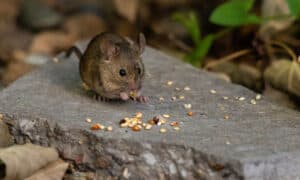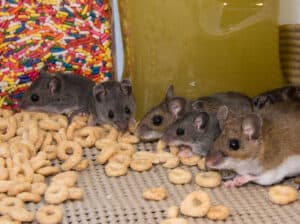Rodents make up a large portion of the world’s mammalian animals and are abundant around the world. Over 2,050 different types of rodent species can be found across the globe. Capybaras and beavers are some of the largest in the world, but here you will learn about 9 of the smallest rodents in the world.
Rodents include animals like mice, rats, guinea pigs, squirrels, gerbils, and many other small mammals. Rodents can be pests or even a pet and live in various habitats. Mice are one of the most common rodents and one of the smallest. More than 1,000 mice species exist, some of which are smaller than your average house mouse. Here is everything to know about 9 of the smallest rodent species in the world.

1. Desert Dormouse
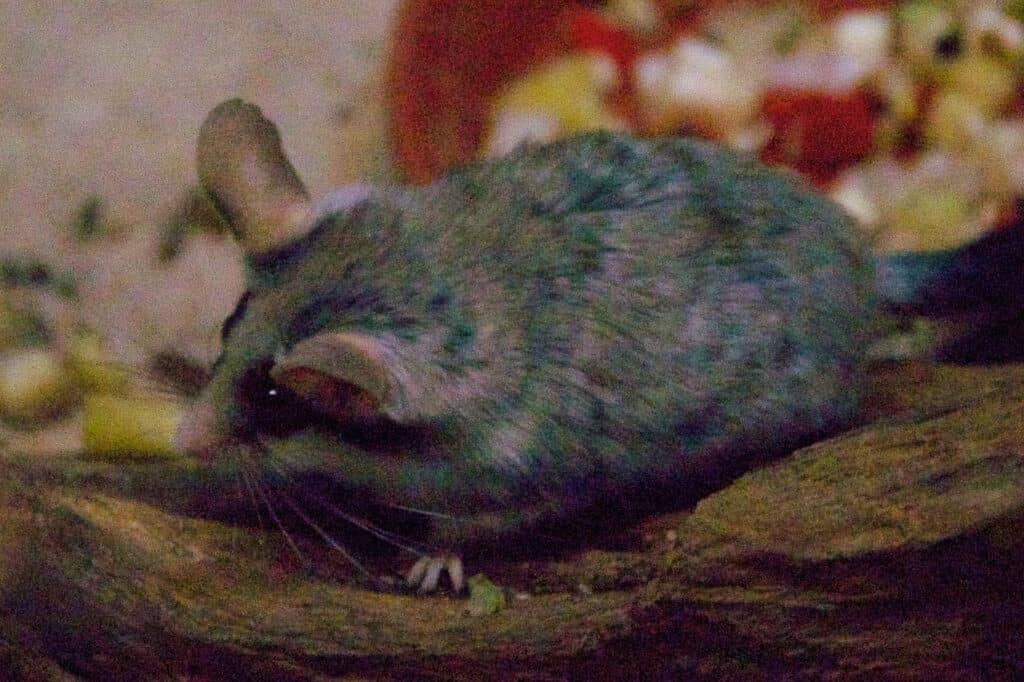
The dormouse is named after its affinity to sleep for long periods of time.
©Photograph by Mike Peel (www.mikepeel.net) / CC BY-SA 4.0 – License
The desert dormouse is an endangered species that is native to Central Asia. This small rodent is native to Kazakhstan and lives in desert habitats. They are nocturnal and prefer dry, sandy habitats. The desert dormouse is extremely rare, and studying them in the wild can be difficult because of their secretive lifestyle.
Desert dormouse are omnivores that feed on bugs, eggs, nuts, and fruits. They are some of the smallest dormouse and rodents. On average, they reach a size between 3.1 to 3.9 inches. They weigh around 28 grams and have a round body like a guinea pig. Orange and brown are their colors, and small, fine hairs cover this rodent’s body.
2. Meadow Jumping Mouse

It takes around three weeks after being born for the meadow jumping mouse to know how to hop.
©iStock.com/gatito33
The meadow jumping mouse is one of the smallest rodents in the world. This species, on average, grows to be around 3.4 inches long and weighs around 0.65 oz. This small species is found in North America and lives in grassy habitats with plenty of ground vegetation. Jumping meadow mice prefer to live in areas with a lot of moisture and are usually active at night.
Meadow jumping mice are one of the smallest rodents, and being so small, they are preyed on by various animals. Hawks, owls, foxes, and snakes are some of their natural predators. They are secretive, but this small species is also capable of jumping 6 to 8 feet to get away from danger.
3. House Mouse
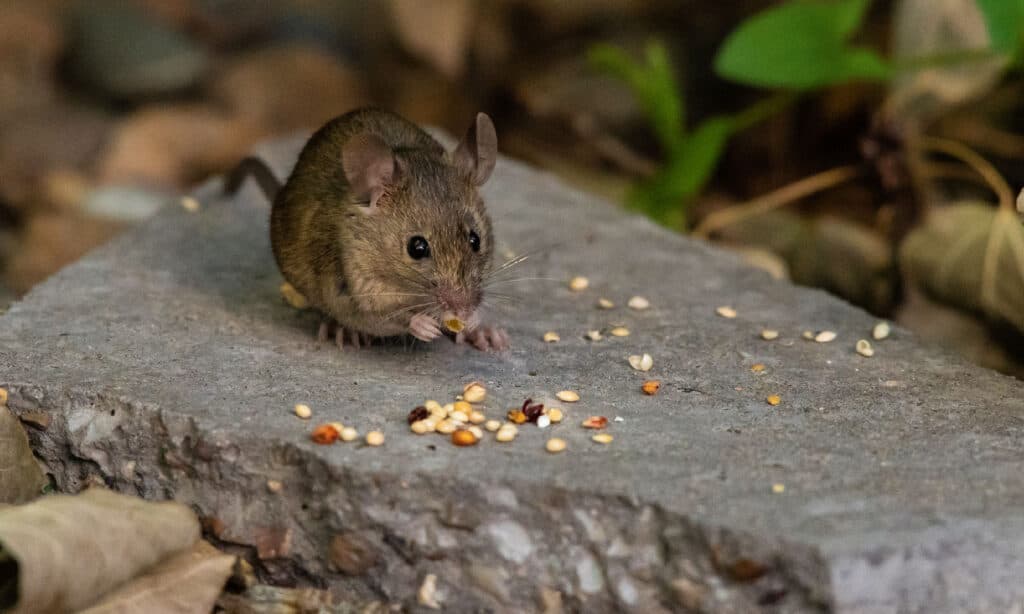
It is common for house mice to be found wherever humans are since we are a great source of food, shelter, water, and protection from predators.
©iStock.com/Víctor Suárez Naranjo
House mice are a widespread rodent and get their name since they are often found in human structures like houses, barns, sheds, and other buildings. Being so small, they can sneak into the tiniest of places and may even go unnoticed for a prolonged period. It is common for house mice to be found wherever humans are since we are a great source of food, shelter, water, and protection from predators. The house mouse is one of the world’s most widespread and abundant rodents.
Small and gray, the average weight for a house mouse is 0.68 oz, and they only grow to be around 3.4 inches. In cabinets, attics, and small places are where they can be found when in your home, and they are active mostly at night but occasionally during the day. Fruits, grains, and other foods fit into their omnivorous diet, thereby being attracted to homes.
4. Northern Birch Mouse
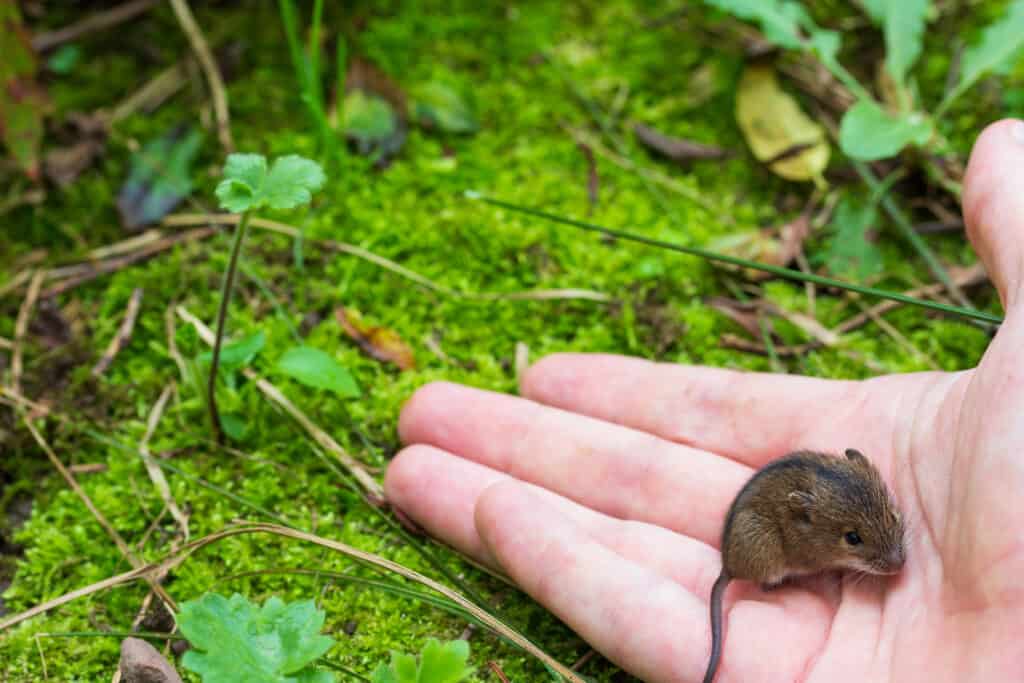
The tail of the Nothern Birch mouse is longer than its entire body.
©iStock.com/gutaper
Birch mice are a genus of small rodents, and the smallest species of all is the Northern Birch mouse. On average, this species reaches a length of around 1.9 to 3.1 inches (5 to 8 cm). They are extremely light and only weigh 0.31 oz (8.7 grams). A black stripe runs across the Northern Birch mouse’s body, and they have dark tan fur.
The Northern Birch mouse lives in Eastern Europe and Asia. They are abundant in their range and are active from spring to late fall. In winter, they hibernate and spend the cold season in a burrow. Their small size helps them navigate into the smallest of places and navigate the forest habitat they live in. Northern Birch mice are omnivores surviving on a diet of insects, fruits, and other plants. Like other small rodents, their small size makes them susceptible to predators like owls and foxes.
5. Kangaroo Mouse
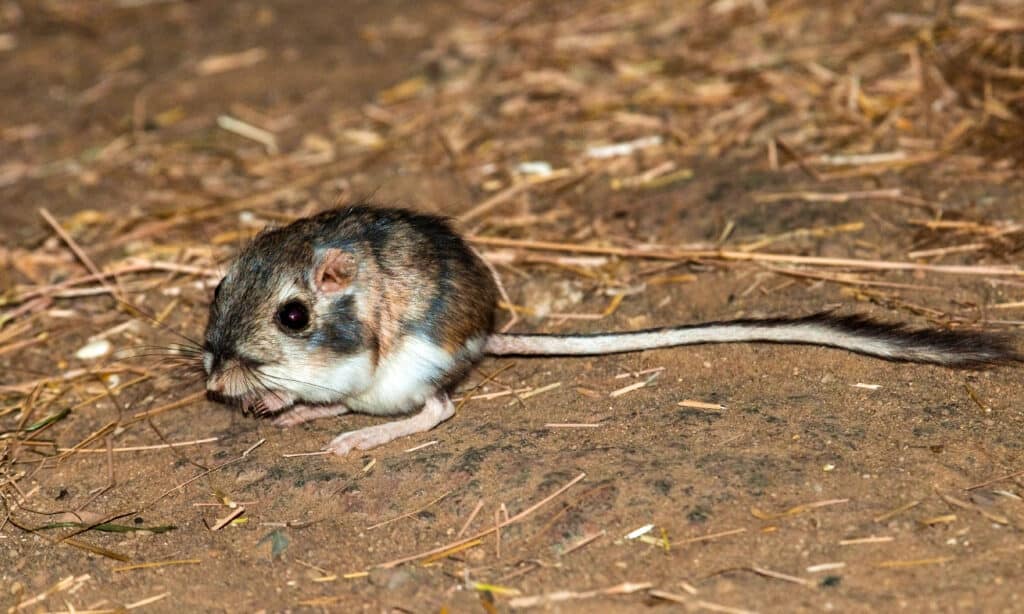
The kangaroo mouse walks on two legs and hops up to 10 feet per second.
©Arie v.d. Wolde/Shutterstock.com
In the southwestern United States lives the Kangaroo mouse, one of the smallest rodents you can find in the American deserts. This species lives in states like Nevada, California, Oregon, Utah, and Idaho. After the sun sets, the kangaroo mouse is most active, looking for bugs and plants to eat. They live in underground burrows and will make room to store the food they find.
Kangaroo mice, at most, only grow to be around 3 inches. Like a kangaroo, their back legs are long and hop around like one. Kangaroo mice weigh 10 to 17 grams and are often preyed upon by many large predators. This species is not endangered but is on the decline due to habitat loss and overhunting by predators.
6. Silky Pocket Mouse
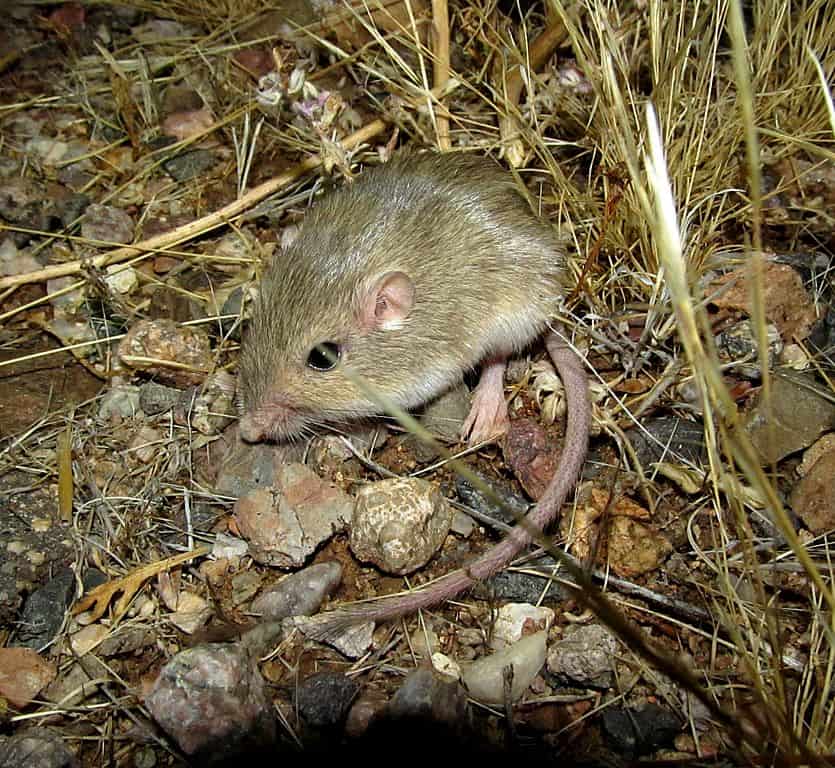
The fur of the silky pocket mouse is softer than most other mice.
©Bob Beatson from Tucson, Arizona / CC BY-SA 2.0 – License
Pocket mice belong to the family of Heteromyidae and are tiny rodents. The Silky pocket mouse is the smallest of all and, on average, reaches a size of around 2.4 inches (6 cm). They have short tails, tiny feet, and large ears to help them hear any nearby threats. The hair on the Silky pocket mouse is short and is colored dark to light tan. Males and females generally look the same, but males have longer tails.
The Southern United States and Mexico are where this small rodent lives. They are only active at night and hide in their burrow during the day. Like other mice, they are scavengers and collect small plants and nuts to eat later. Water is not needed often, as they get most of it from their food. This species is very common in its range, and like many of its relatives, they are small enough to fit in your pocket.
7. Roborovski Dwarf Hamster
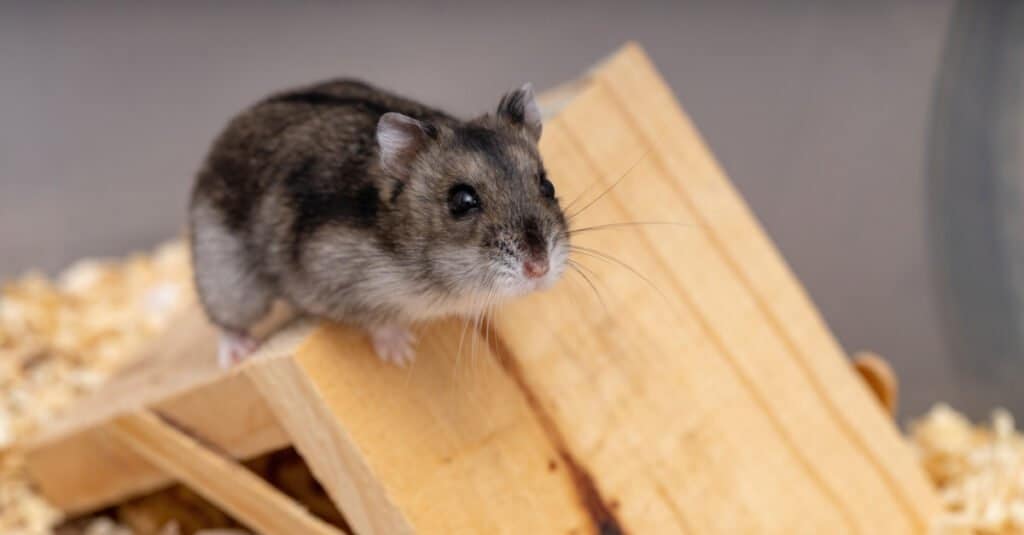
Hamsters are one of the most popular rodent pets and come in various sizes. There are more than 20 different hamster species, and the Roborovski dwarf hamster is the smallest. This species only grows to about 2 inches in length and weighs between 0.71 to 0.88 oz.
Kazakhstan, China, and Mongolian deserts are where this species lives in the wild. Roborovski dwarf hamsters are popular pets because of their size but only live up to 4 years. Grayish-brown is the color this species appears in, but their coat turns white in winter. Like other hamsters, this species feeds on foods like grains, seeds, and nuts.
8. Dwarf three-toed Jerboa
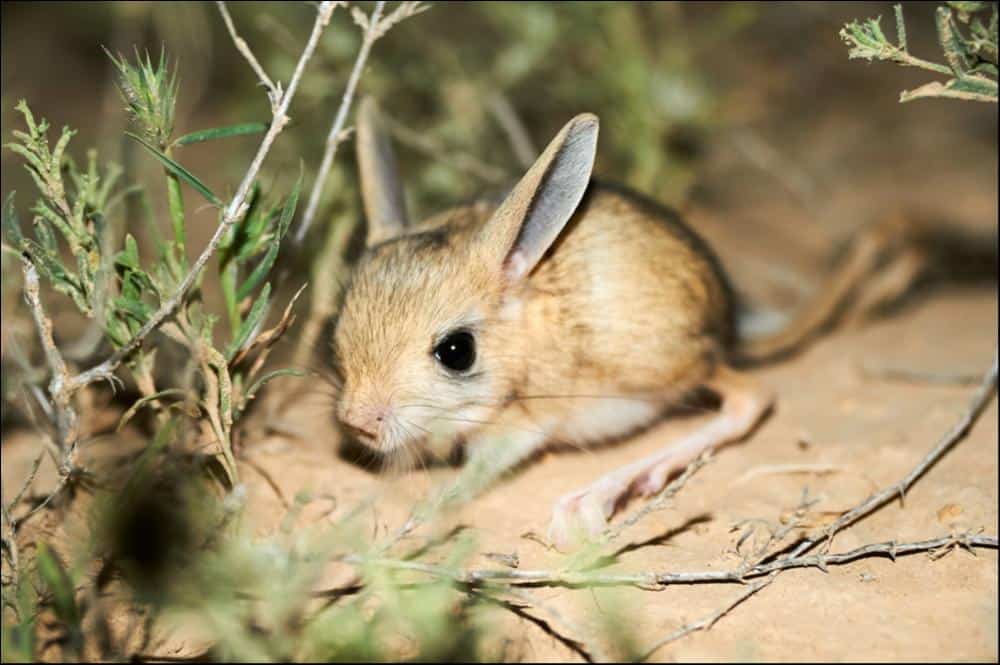
Jerboas have large ears to help them regulate their temperature in the desert habitat.
©Yerbolat Shadrakhov/Shutterstock.com
Dwarf Jerboas are the smallest rodent species in the world. Being extremely tiny, they only reach a body length of around 1.7 inches, and their tails are the longest part of their body and grow to be around 3.1 inches. When fully grown, Jerboas are still extremely tiny and only weigh around 3.75 grams (0.132 oz). Dwarf three-toed Jerboas are tied for the smallest species in the world with the African pygmy mouse. Both species’ sizes may vary, but they are matched with how small they can get.
Pakistan is where this small rodent lives, as they inhabit the desert and plains habitats. Like other mice, they are nocturnal and use the cover of the night to travel undetected, and night helps this small species avoid being spotted by most predators. Dwarf three-toed Jerboas are commonly preyed on by snakes, birds, and cats. Little is known about their status as a species because their population is small and scattered.
9. African Pygmy Mouse
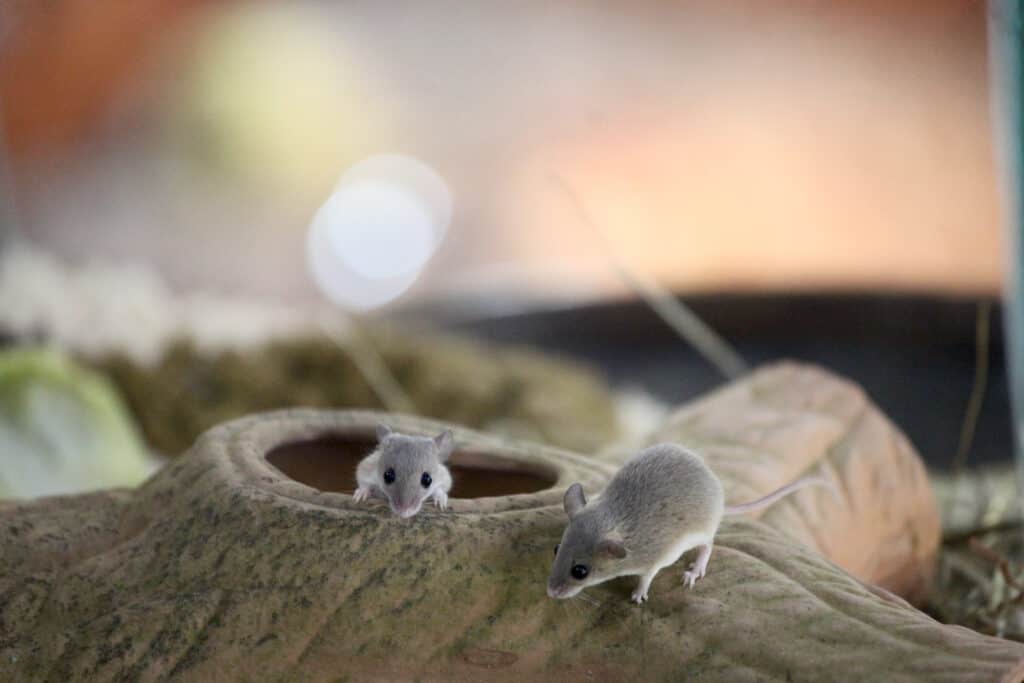
The African pygmy mouse is tied for the smallest mouse with the Dwarf three-toad Jerboa.
©iStock.com/PapaPics
African pygmy mice are one of the world’s smallest rodent and mouse species. The size of this species varies between 1.2 to 3.1 inches, and they weigh between 0.11 to 0.42 oz. African pygmy mice are considered the world’s smallest rodent by many, and being so small, it is common for them to be kept as pets. This species has a large range over Africa and enjoys social interactions with other mice. Deserts, grasslands, dry scrub, and fields are some of the habitats they live in.
A water source is usually near the habitat they live in since this species can drink so much water, even for its tiny size. They survive off an omnivorous diet and have a lifespan of about 2 years. In the wild, these small creatures are often food for the larger animals that coexist with them in their habitat. To maintain their population, they can breed quickly and have a gestation period of around 20 days.
Summary of 9 Smallest Rodents in the World
| Rank: Largest to Smallest | Rodent | Length |
|---|---|---|
| 1 | Desert Dormouse | 3.1 to 3.9 inches |
| 2 | Meadow Jumping Mouse | 3.4 inches |
| 3 | House Mouse | 3.4 inches |
| 4 | Northern Birch Mouse | 1.9 to 3.1 inches |
| 5 | Kangaroo Mouse | 3 inches |
| 6 | Silky Pocket Mouse | 2.4 inches |
| 7 | Roborovski Dwarf Hamster | 2 inches |
| 8 | Dwarf Three-Toed Jerboa | 1.7 inches |
| 9 | African Pygmy Mouse | 1.2 to 3.1 inches |
The photo featured at the top of this post is © dr OX/Shutterstock.com
Thank you for reading! Have some feedback for us? Contact the AZ Animals editorial team.




